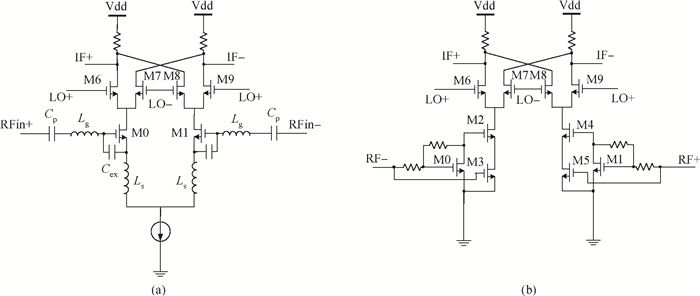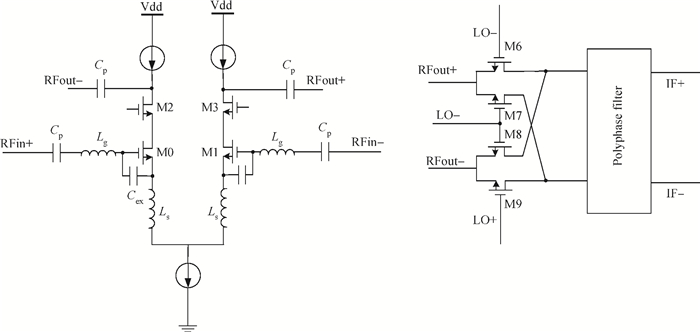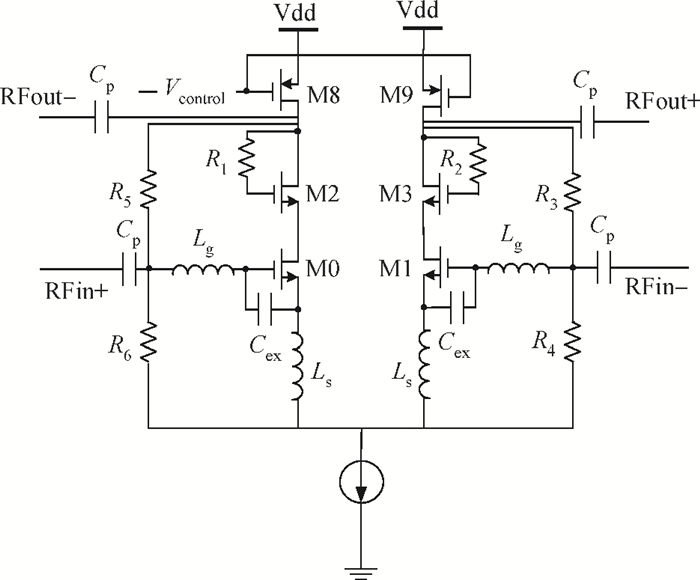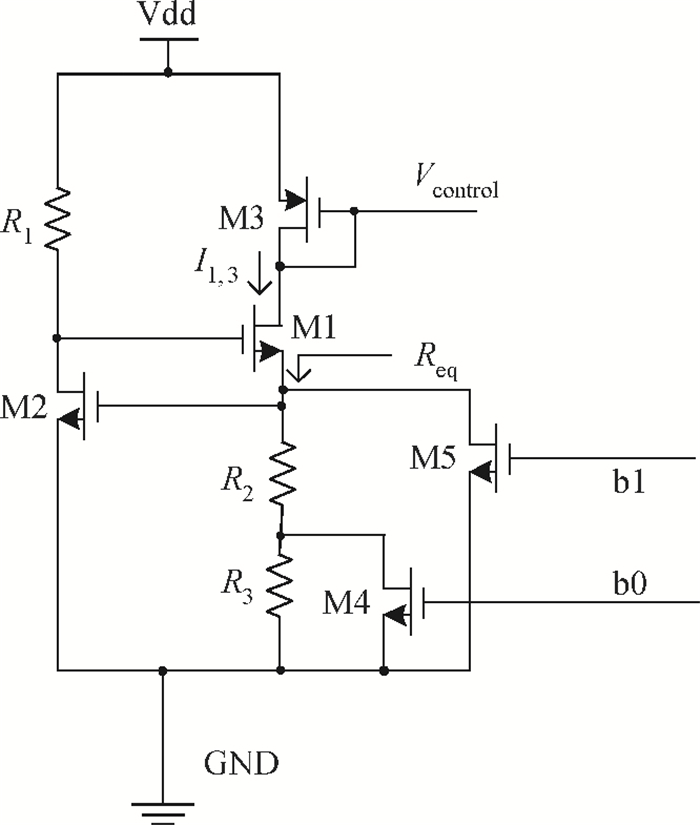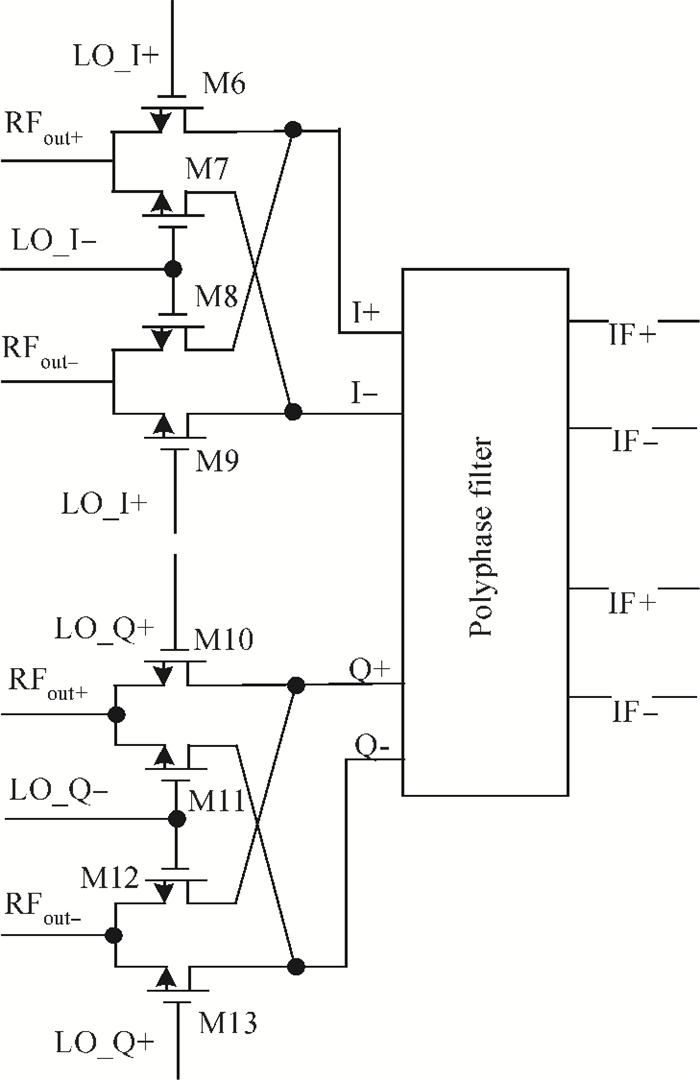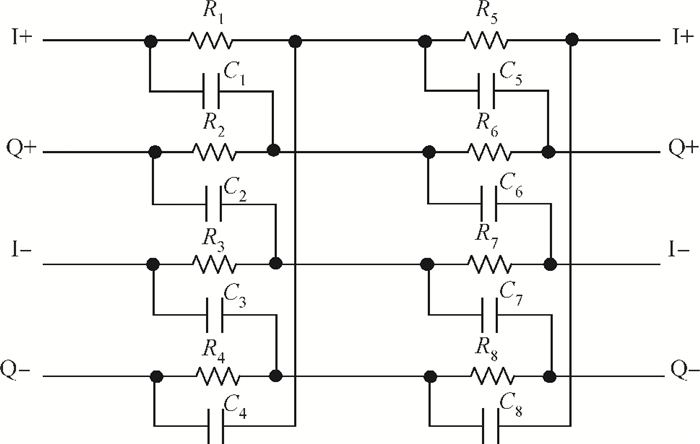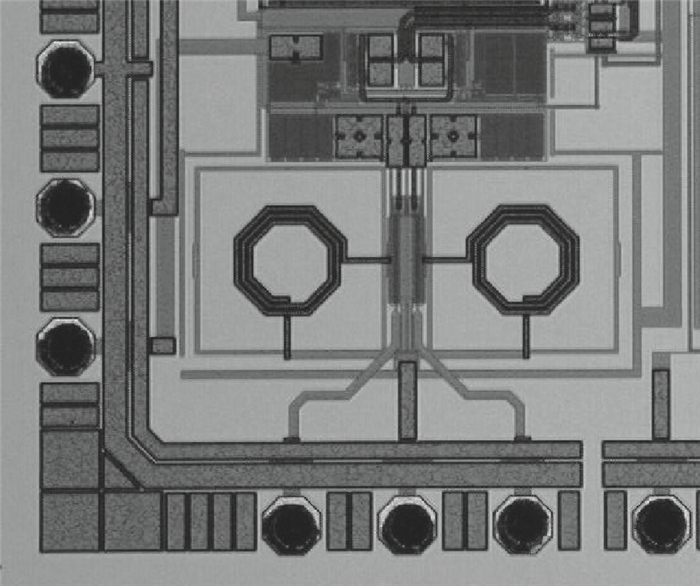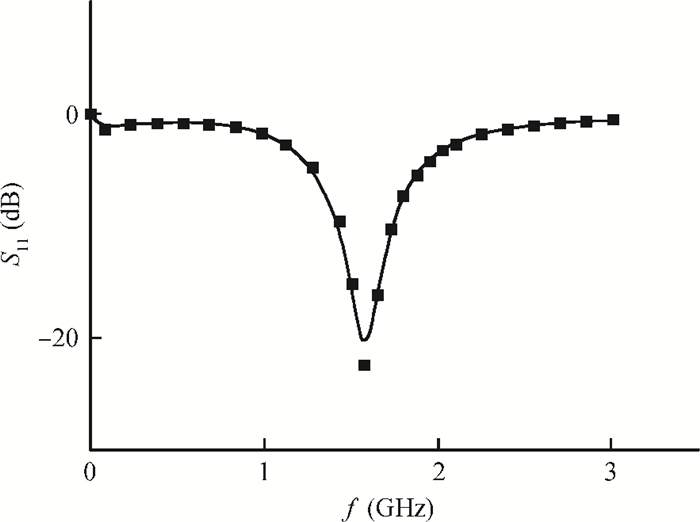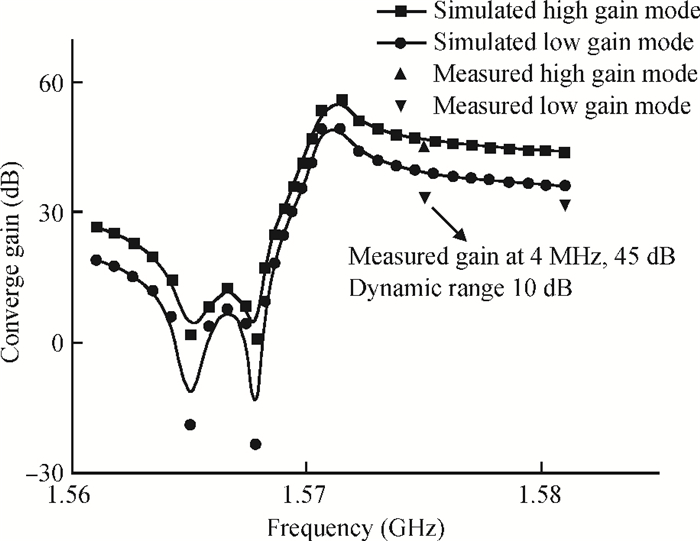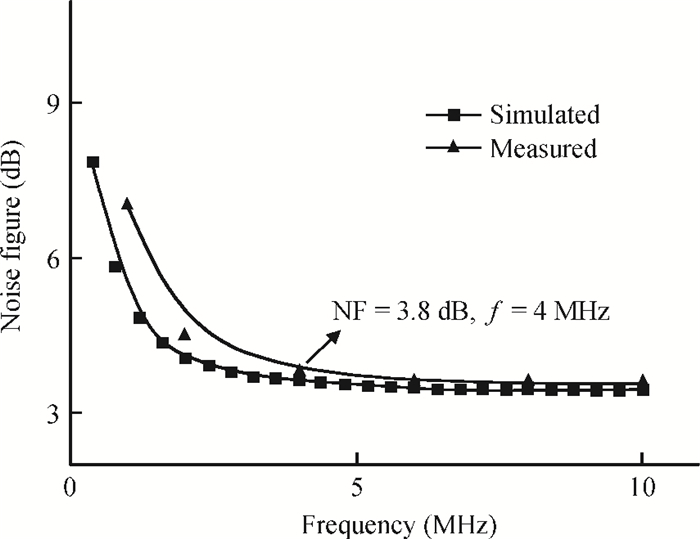| Citation: |
Binbin Wei, Jinguang Jiang. A low power high gain gain-controlled LNA + mixer for GNSS receivers[J]. Journal of Semiconductors, 2013, 34(11): 115002. doi: 10.1088/1674-4926/34/11/115002
****
B B Wei, J G Jiang. A low power high gain gain-controlled LNA + mixer for GNSS receivers[J]. J. Semicond., 2013, 34(11): 115002. doi: 10.1088/1674-4926/34/11/115002.
|
A low power high gain gain-controlled LNA + mixer for GNSS receivers
DOI: 10.1088/1674-4926/34/11/115002
More Information
-
Abstract
A low power high gain gain-controlled LNA + mixer for GNSS receivers is reported. The high gain LNA is realized with a current source load. Its gain-controlled ability is achieved using a programmable bias circuit. Taking advantage of the high gain LNA, a high noise figure passive mixer is adopted. With the passive mixer, low power consumption and high voltage gain of the LNA + mixer are achieved. To fully investigate the performance of this circuit, comparisons between a conventional LNA + mixer, a previous low power LNA + mixer, and the proposed LNA + mixer are presented. The circuit is implemented in 0.18 μm mixed-signal CMOS technology. A 3.8 dB noise figure, an overall 45 dB converge gain and a 10 dB controlled gain range of the two stages are measured. The chip occupies 0.24 mm2 and consumes 2 mA current under 1.8 V supply. -
References
[1] Meng T H. Low power GPS receiver design. IEEE Workshop on Signal Processing Systems, 1998 http://ieeexplore.ieee.org/document/715763/[2] Lee T H. The design of CMOS radio-frequency integrated circuits. Cambridge, UK:Cambridge University Press, 2004 http://ci.nii.ac.jp/ncid/BA37787919[3] Sjöland H, Karimi-Sanjaani A, Abidi A A. A merged CMOS LNA and mixer for a WCDMA receiver. IEEE J Solid-State Circuits, 2003, 38(6):1045 doi: 10.1109/JSSC.2003.811952[4] Shen C, Li Z. A low power 0.3-3.8 GHz low-noise mixer with noise cancellation. IEEE MTT-S International Microwave Workshop Series on Millimeter Wave Wireless Technology and Applications (IMWS), 2012 http://ieeexplore.ieee.org/document/6338178/authors[5] Sun J, Huang L, Liu H, et al. A 0.18μm mixer merged with LNA exploiting noise cancellation. IEEE International Symposium on Radio-Frequency Integration Technology (RFIT), 2011[6] Shaeffer D K, Lee T H. A 1.5-V, 1.5-GHz CMOS low noise amplifier. IEEE J Solid-State Circuits, 1997, 32(5):748 http://ieeexplore.ieee.org/document/568846/?arnumber=568846&punumber%3D4[7] Leroux P, Janssens J, Steyaert M. A 0.8-dB NF ESD-protected 9-mW CMOS LNA operating at 1.23 GHz. IEEE J Solid-State Circuits, 2002, 37(6):760 doi: 10.1109/JSSC.2002.1004580[8] Terrovitis M T, Meyer R G. Noise in current-commutating CMOS mixers. IEEE J Solid-State Circuits, 1999, 34(6):772 doi: 10.1109/4.766811[9] Darabi H, Abidi A A. Noise in RF-CMOS mixers:a simple physical model. IEEE J Solid-State Circuits, 2000, 35(1):15 doi: 10.1109/4.818916[10] NacEachern L A, Manku T. A charge-injection method for Gilbert cell biasing. IEEE Canadian Conference on Electrical and Computer Engineering, 1998, 1:365[11] Kim M, Lee J, Yun T. Low-noise and high-gain mixer combining switched-biasing and current-bleeding techniques. Electron Lett, 2012, 48(23):1476 doi: 10.1049/el.2012.2642[12] Darabi H, Chiu J. A noise cancellation technique in active RF-CMOS mixers. IEEE J Solid-State Circuits, 2005, 40(12):2628 doi: 10.1109/JSSC.2005.857428[13] Kim N, Aparin V, Larson L E. A resistively degenerated wide-band CMOS passive mixer with low noise figure and high ⅡP2. IEEE Trans Microw Theory Tech, 2010, 58(4):820 doi: 10.1109/TMTT.2010.2042644[14] Bao Kuan, Fan Xiangning, Li Wei, et al. A wideband current-commutating passive mixer for multi-standard receivers in a 0.18μm CMOS. Journal of Semiconductors, 2012, 34(1):015003 http://www.jos.ac.cn/bdtxbcn/ch/reader/view_abstract_new.aspx?volume=34&start_page=015003[15] Liu Rongjiang, Guo Guiliang, Yan Yuepeng. High linearity current communicating passive mixer employing a simple resistor bias. Journal of Semiconductors, 2013, 34(3):035005 doi: 10.1088/1674-4926/34/3/035005[16] Macario R C V, Mejallie I D. The phasing method for sideband selection in broadcast receivers. EBU Rev, 1980, 181:119[17] Meng C C, Sung D W, Huang G W. A 5.2-GHz GaInP/GaAs HBT double-quadrature downconverter with polyphase filter for 40-dB image reflection. IEEE Microw Compon Lett, 2005, 30(2):59 http://ieeexplore.ieee.org/xpl/abstractAuthors.jsp?reload=true&arnumber=1390964&filter%3DAND%28p_IS_Number%3A30286%29[18] Lai Dengjun, Chen Yingmei, Wang Xiaodong, et al. A CMOS single-differential LNA and current bleeding CMOS mixer for GPS receivers. 12th IEEE International Conference on Communication Technology (ICCT), 2010 http://ieeexplore.ieee.org/Xplore/home.jsp[19] Le V H, Han S K, Lee J S, et al. Current-reused ultra low power, low noise LNA mixer. IEEE Microw Wireless Compon Lett, 2009, 19(11):755 doi: 10.1109/LMWC.2009.2032028[20] Abdelghany M A, Pokharel R K, Kanaya H, et al. Low-voltage low-power combined LNA-single gate mixer for 5 GHz wireless systems. IEEE Radio Frequency Integrated Circuits Symposium (RFIC), 2011:1[21] Sun Jingye, Huang Lu, Yuan Haiquan, et al. A 0.18μm CMOS Gilbert low noise mixer with noise cancellation. Journal of Semiconductors, 2012, 33(2):025004 doi: 10.1088/1674-4926/33/2/025004 -
Proportional views





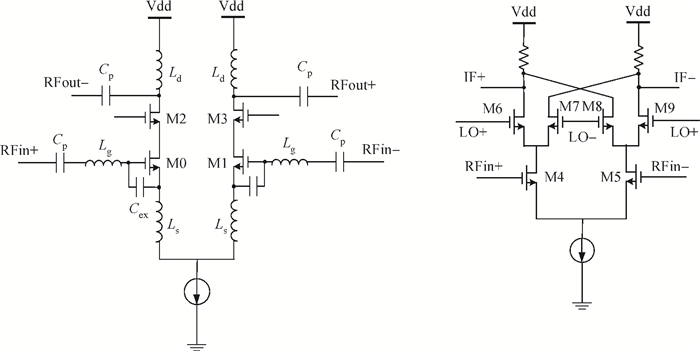
 DownLoad:
DownLoad:
